We often get asked “What is the best way to paint on ceramics with acrylic paint?”. The question is usually geared toward painting unglazed pottery, but also sometimes glazed ceramics. We do not recommend our products be used on anything that will touch food, hold liquid or go into a dishwasher, so painting ceramics should only be considered if doing a decorative piece instead of a functional piece. Glazed ceramics are waterproof and acrylics will have poor adhesion, so painting glazed ceramics is generally not recommended. We also do not recommend that painted ceramic be used near heat, as with fireplace surrounds, beverage coasters or trivets.
First let’s define ceramics and specifically what we tested with our acrylics.
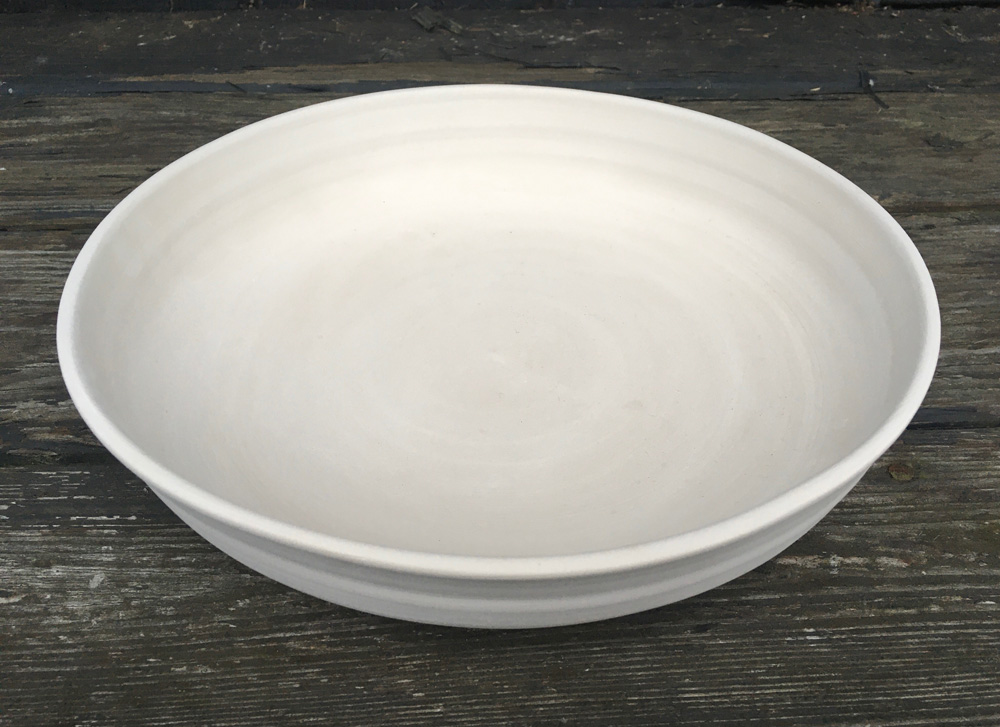
“Greenware” or “Green” refers to clay that is air dried and has not been fired in a kiln. Green ceramics are extremely fragile and should be handled very cautiously. Without firing the clay, it really has very little strength and a short life span. We do not recommend using greenware as your final piece of artwork or a base for painting because even if you could get the paint to stick, it would not add protection or strength.
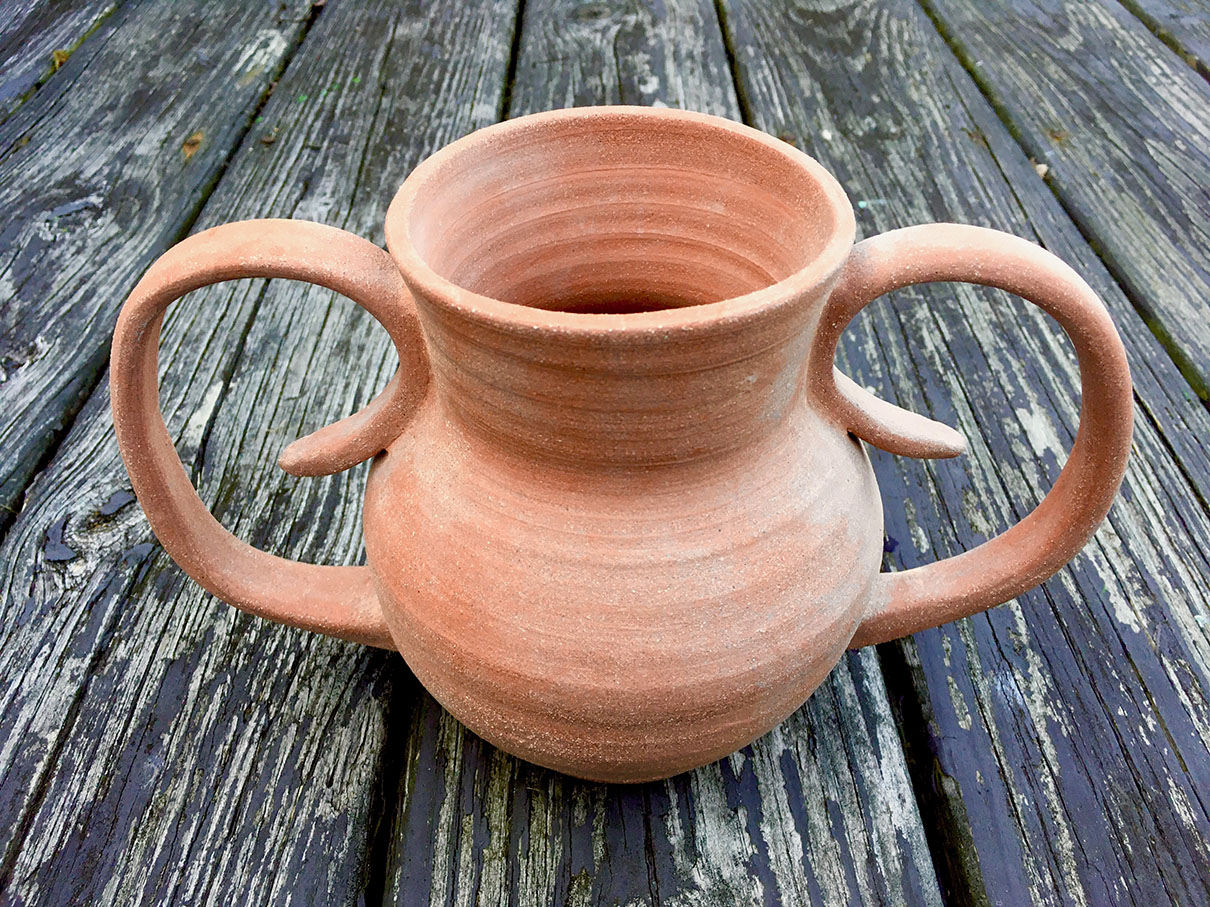
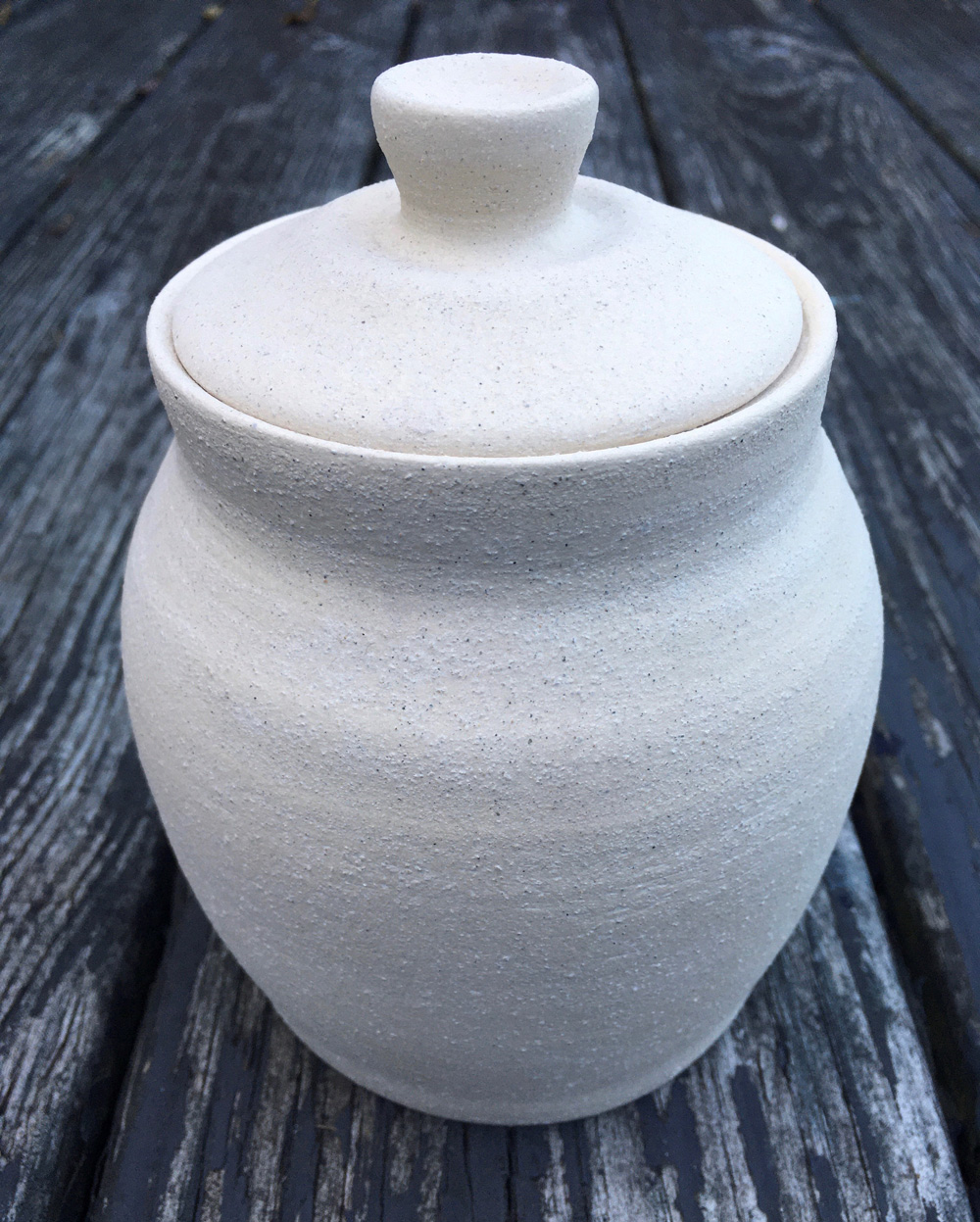
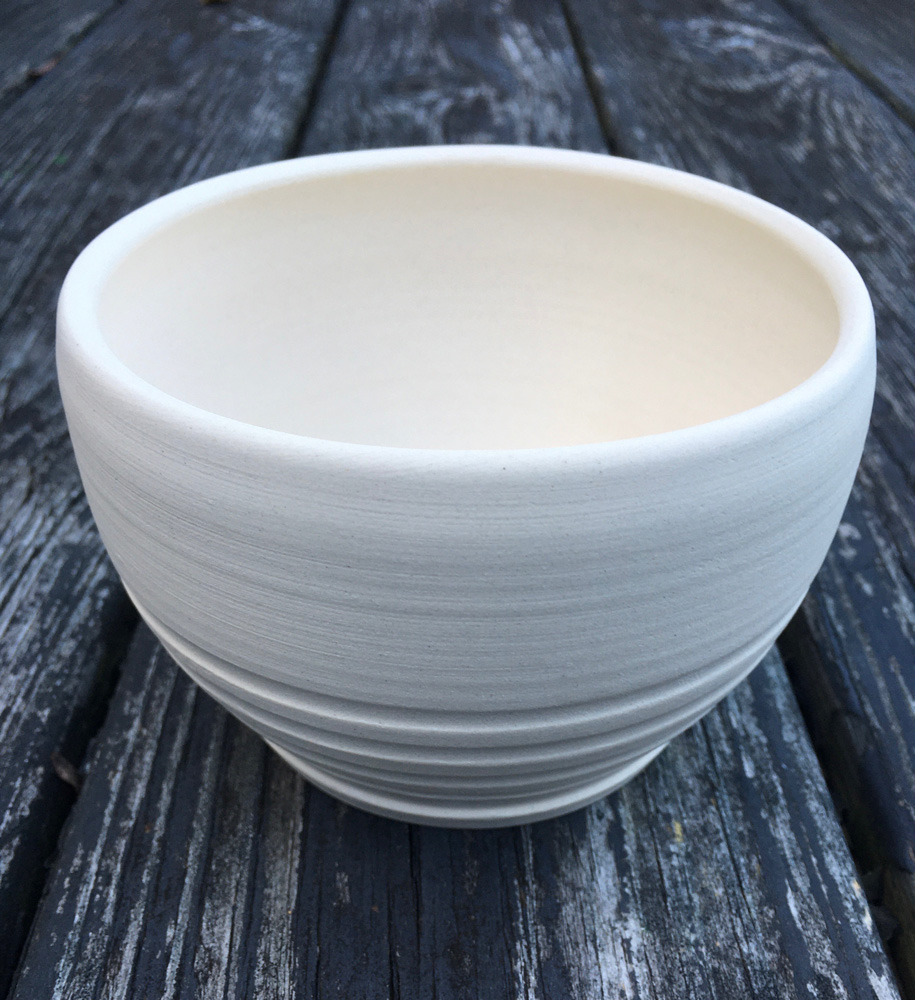
“Bisque” fired clay or unglazed ceramics is greenware clay that has been fired once in a kiln. Bisque firing builds structure and strength. These are the best type of ceramics to be used if you would like to apply paint. Bisque fired clay is very porous and it is optimal if the paint soaks into the pores of the bisque fired clay for best adhesion. High Flow Acrylics tend to absorb quickly into the bisque and barely leave any film formation on top of the piece and why it showed the best adhesion in our testing. This could also be achieved by thinning the Heavy Body and Fluid Acrylics with water and applying as a wash or applying a thin medium like High Flow Medium as a first coat and letting dry, then painting on top of the dry medium. The only challenge with thin paint is that it could bleed into valleys left behind if the leather-hard clay was trimmed before completely being left to dry before firing. This can be beautiful as a stain effect, but could be difficult if fine details are needed. This should not be an issue if the clay surface is smooth, as in clay that is cast in a mold.
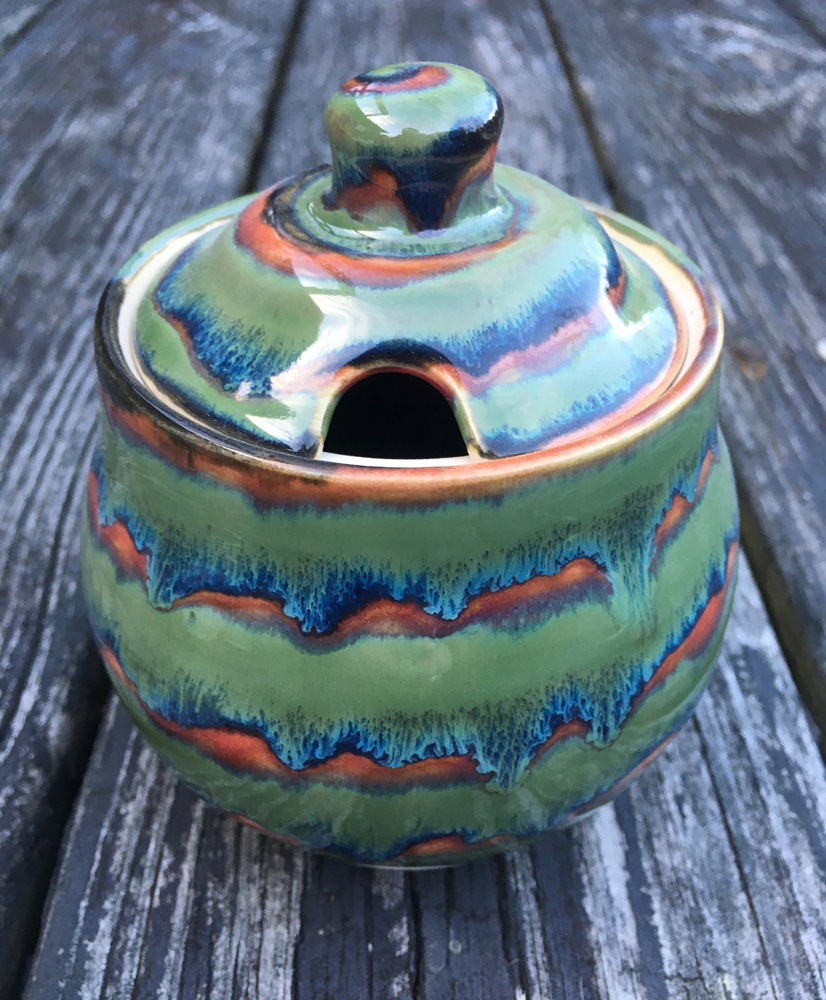 Glazed ceramics is clay that has already been fired once, then ceramic glazes are applied and the piece is fired again at a higher temperature. The glazes turn glass-like in the high heat and add durability to the piece. Glazed pottery is waterproof, meaning it can hold water, take heat or cold and can be put in a dishwasher. Artist acrylics are not a replacement for ceramic glazes and should not be fired in a kiln. Melting acrylics is unhealthy. Acrylics have poor adhesion to glazed ceramics and you could likely scratch it off with your fingernail. This is the reason we do not recommend painting on glazed ceramics including tiles; the paint will not make a permanent bond and would remain vulnerable to scratching. Adding GAC 200 into the paint or applied first and then paint applied on top could create better, but not perfect adhesion to glazed ceramics.
Glazed ceramics is clay that has already been fired once, then ceramic glazes are applied and the piece is fired again at a higher temperature. The glazes turn glass-like in the high heat and add durability to the piece. Glazed pottery is waterproof, meaning it can hold water, take heat or cold and can be put in a dishwasher. Artist acrylics are not a replacement for ceramic glazes and should not be fired in a kiln. Melting acrylics is unhealthy. Acrylics have poor adhesion to glazed ceramics and you could likely scratch it off with your fingernail. This is the reason we do not recommend painting on glazed ceramics including tiles; the paint will not make a permanent bond and would remain vulnerable to scratching. Adding GAC 200 into the paint or applied first and then paint applied on top could create better, but not perfect adhesion to glazed ceramics.
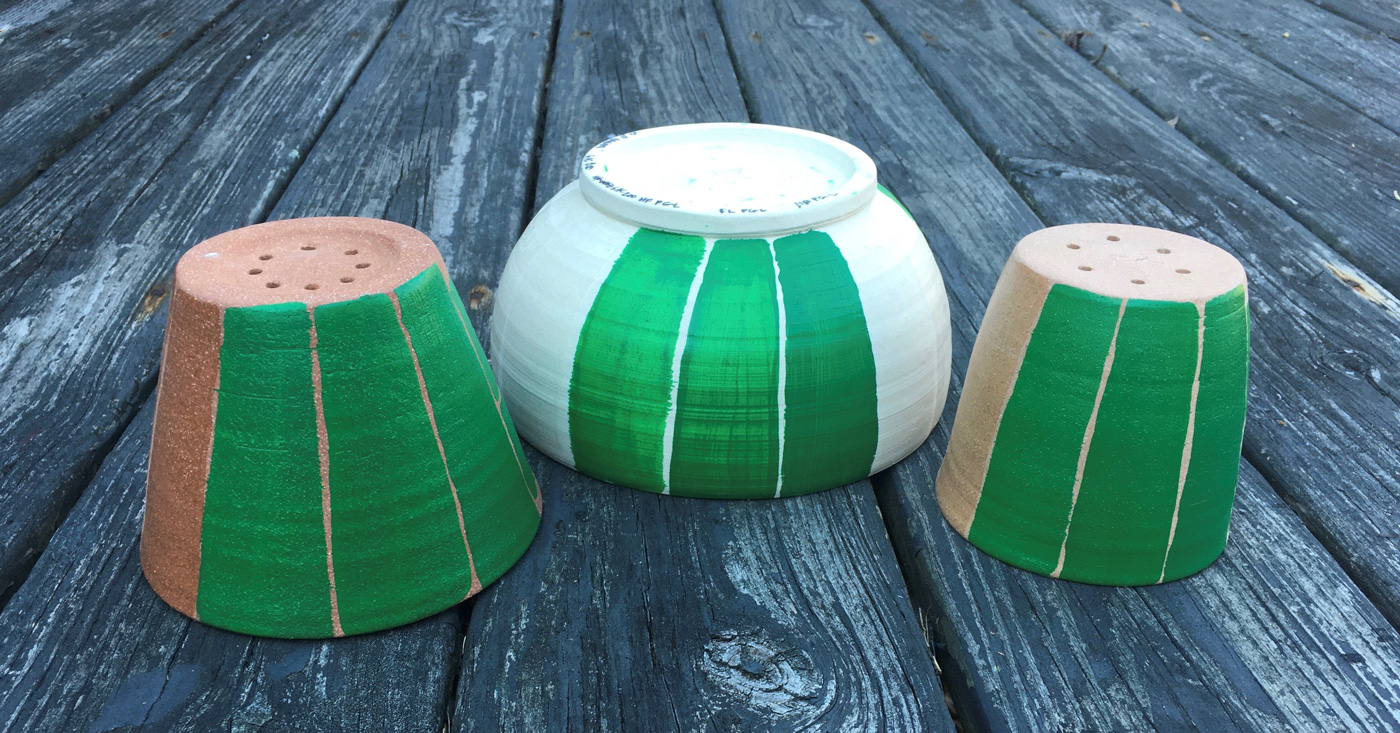
Testing Specifics on Bisque
On the bisque fired earthenware, stoneware and porcelain clay bodies we tested the adhesion of High Flow Acrylics, Fluid Acrylics, Heavy Body Acrylics, High Flow Medium, GAC 100, GAC 200, and GAC 800. What we discovered was that all three of the acrylic paint lines generally had good adhesion to the unglazed pottery. We saw a small bit of a failure with the Fluid Acrylics and Heavy Body where the paint was applied thicker, so our best recommendation would be to keep the paint thin or use High Flow Acrylics, which soaked into the pores and became more incorporated into the piece.
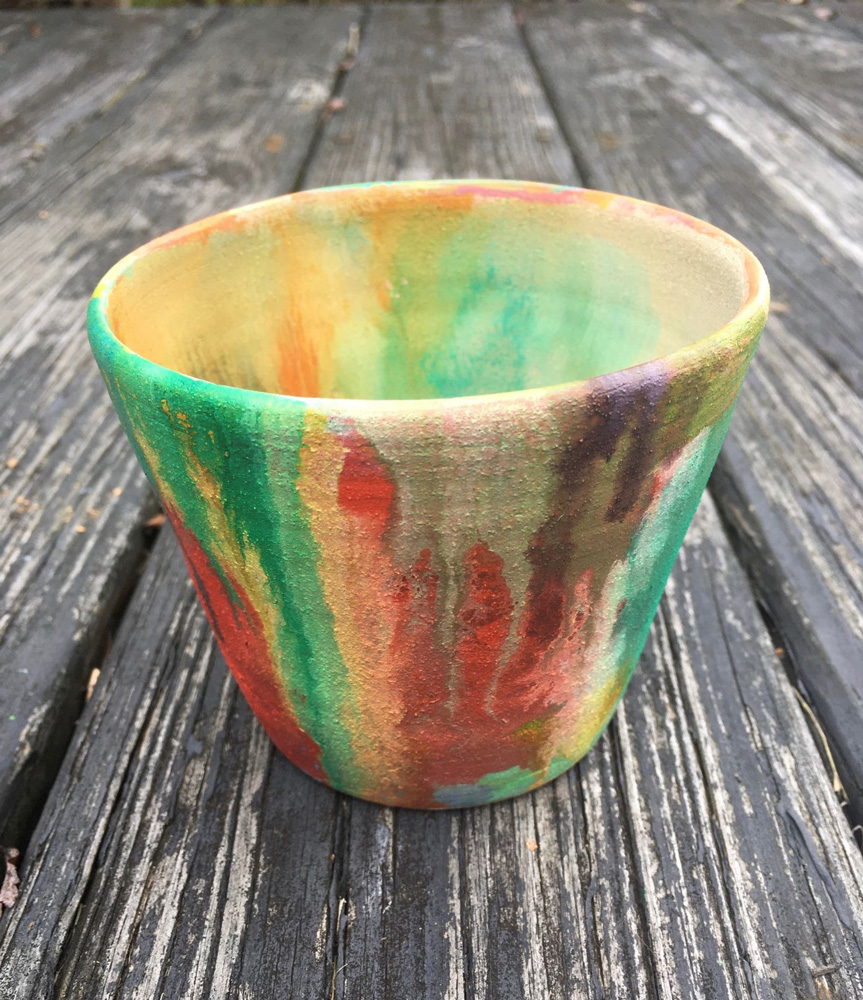
In fact, the clay was so absorbent there was no film built up on to the surface from the High Flow to even cut for the adhesion test! Of the mediums tested, the only one that had poor adhesion was the GAC 100, so if you wanted to create a translucent glaze-like finish with acrylics, we would recommend High Flow Medium, as this is our thinnest medium. The GAC 200, which is our hardest paint film, mixed into the paint could also be used. These will give a tinted glaze to the piece. GAC 200 needs to be applied in a room temperature of at least 70°F or it will crack upon drying. This temperature caveat can be overcome if you mix a minimum of 25% paint or another medium into the GAC 200. You could stop at this point if you were just creating a decorative piece of art.
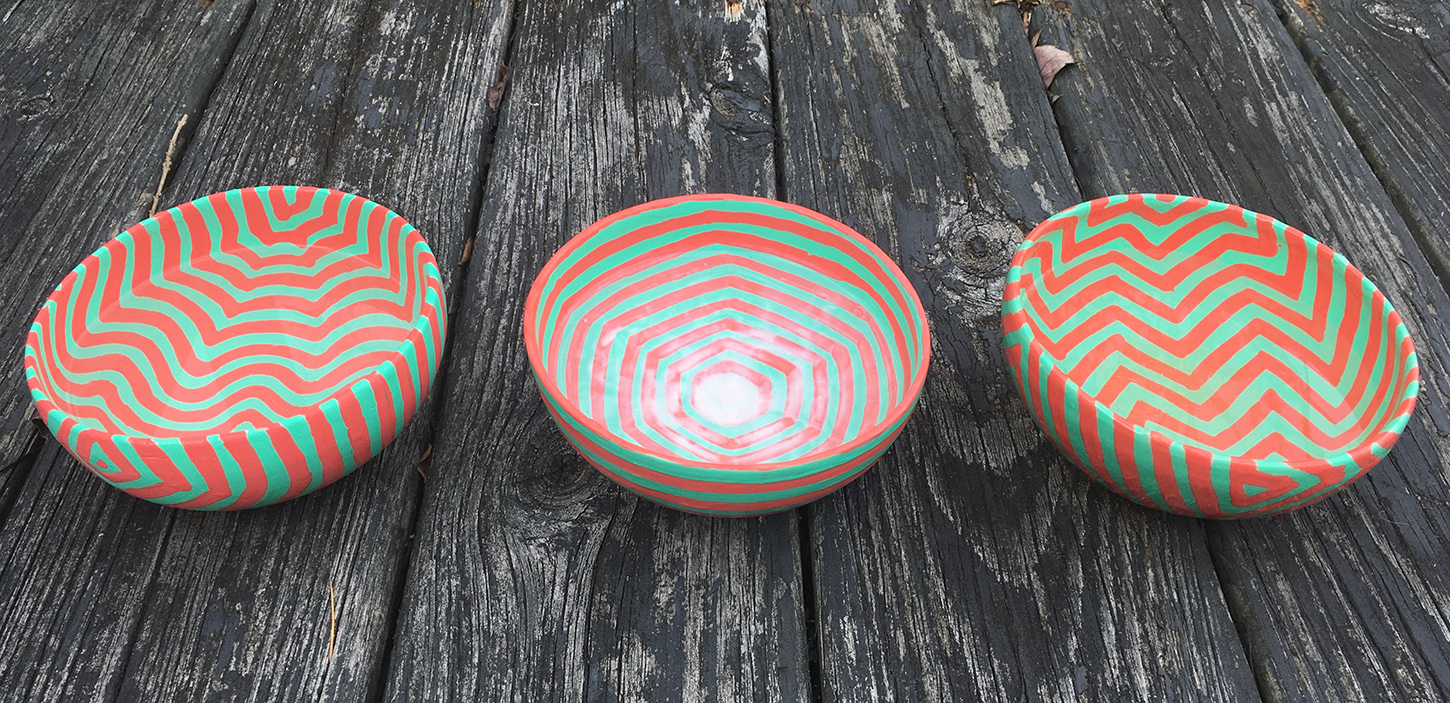
Topcoating Painted Bisque
If you would like to use it to hold water or a plant, we would recommend applying a functional and highly durable topcoat inside and outside the pot. We tested a couple of products on the market to see if it would become waterproof and what we found was the two part epoxy held up the best. We suspected that if a bisque fired vessel was only painted with acrylics, not topcoated, and filled with water, that the acrylics would blanche and swell and eventually fail because they are porous on a microscopic level. Our test showed otherwise. After a week filled with water in a porcelain pot painted inside and out with Fluid Acrylics, the paint held and saw no issues. Since this was limited testing, we don’t have complete confidence in this application and suspect there could be issues with more porous clay bodies like stoneware and earthenware.
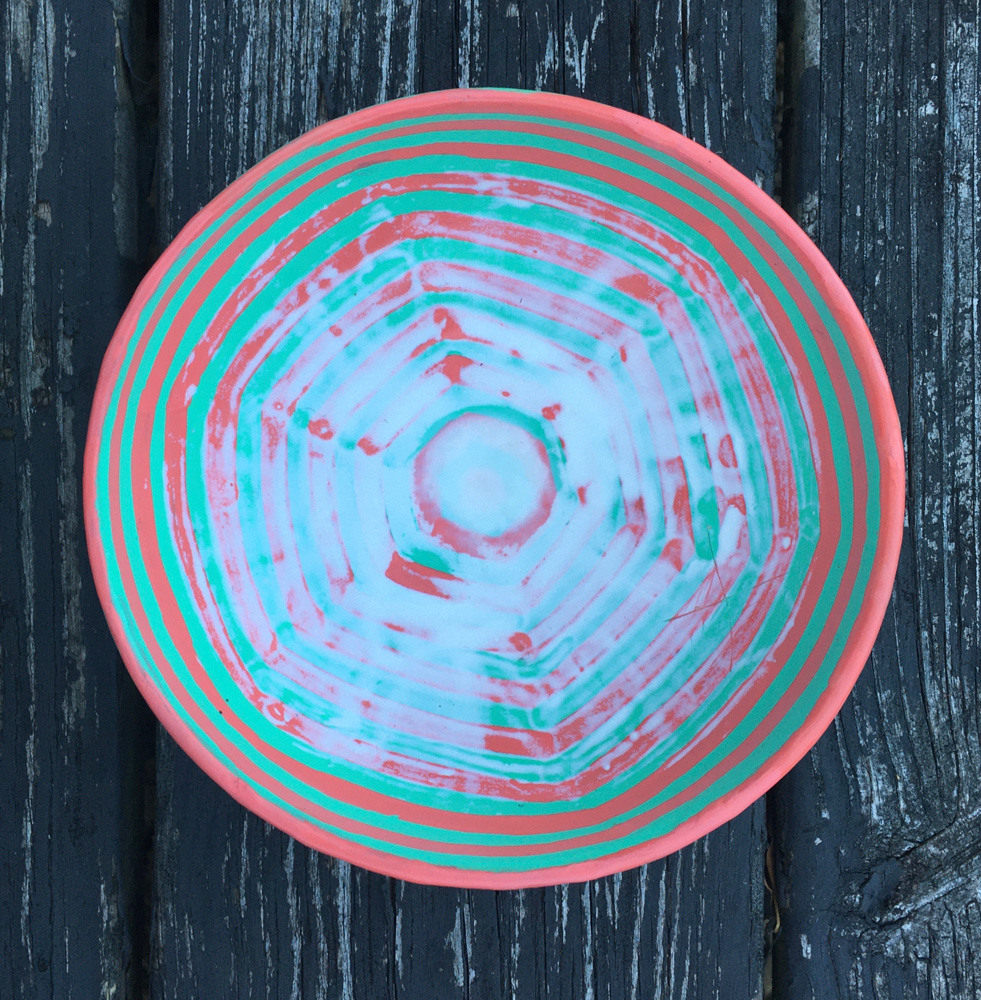
We also tested a water based polyurethane/acrylic commercial topcoat. The water caused this layer to quickly blanch and the bowl dried with a white coating. We think if constantly filled with water, this coating could potentially blister and peel in time. Another option for the painted pot to hold a houseplant, could be to line the pot with some plastic sheeting.

Testing Specifics on Glazed Ceramics
On Glazed ceramics, we tested High Flow Medium, GAC 100, GAC 200, GAC 800 and three acrylic paint lines: High Flow Acrylics, Fluid Acrylics and Heavy Body Acrylics. We tested GAC 200 because it can improve adhesion to non-porous surfaces and GAC 800 because it can improve adhesion to chalky surfaces. All three of the paint lines failed the adhesion tests. The GAC 100 and 800 also failed. The GAC 200 on its own had better adhesion, but we saw some failure with the acrylic mixed in or on top where it was thicker in the high points of the brush strokes. Acrylics are soft and flexible, so if you would like the paint to be harder, you could mix GAC 200 into the paint to make it harder. While we did see some success of the tests with the High Flow Medium and GAC 200, we would consider it adequate adhesion and not a permanent bond and it may not hold up over time.
In Summary
Painting bisque fired ceramics can be a good alternative if traditional glaze firing is not an option or you desire a more painterly finish, but we must stress that paint is not as durable as ceramic glazing and should only be used for decorative purposes as a sculptural art piece. A benefit to painting instead of glazing is the control that can be had of line, mark or image. There is always an element of surprise when a piece is removed from the kiln after a glaze firing. Due to the nature of the ceramic glaze becoming liquid in the high temperature of a kiln, most glazes tend to move, flow, run, or change color and details and hard edges can be difficult to achieve.
About Stacy Brock
View all posts by Stacy Brock -->Subscribe
Subscribe to the newsletter today!
No related Post

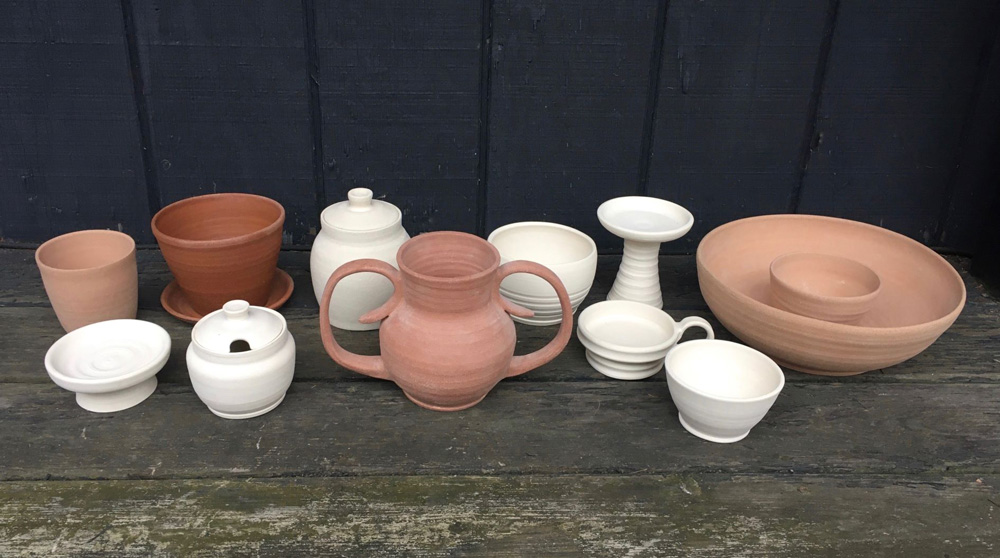
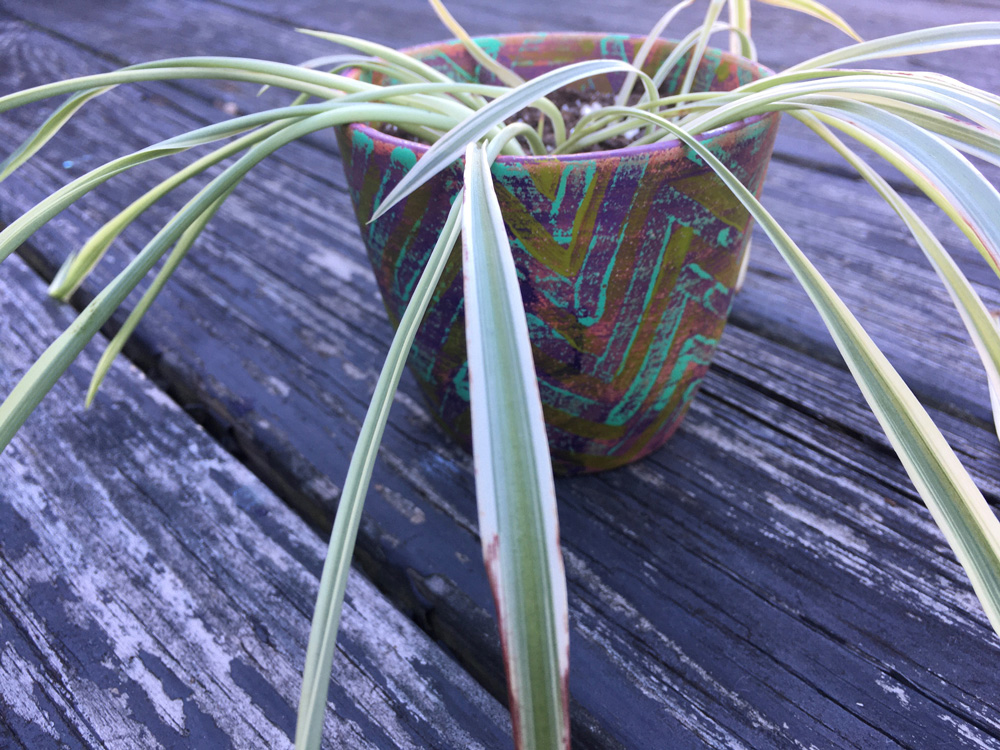
I studied with a teacher for many years who sculpted functional furniture from clay. She even had a piece in The Whitehouse! All her work was painted with oils. By the time I came along, we were painting clay sculpture with acrylics with remarkable and lasting results!
Thanks so much for your input, Rochelle! We are so glad it is working out for you and always appreciate when artist share the results of their practice or tests!
what product did you use as the final finish on the painted clay? i am exploring as i paint my bisque fired pieces and want to protect them with a final satin type finish. any suggestions?
thanks
Hi Andrena,
We only tested a few and the only successful one was a two part epoxy. You may need to do some testing on your own to get something that may work for your needs.
I had the same question as Andrena. Your testing seemed directly related to how well the finish held up to water. I would like to use a finish on sculpture that will not be exposed to water and will be indoors. Any suggestions?
Hi Karen, if you painting is artwork and not a functional piece, meaning it will be on display and not handled, it should be fine to apply and Isolation Coat and one of our varnishes. If you have specific needs for your project, please feel free to email us at [email protected] and we would be happy to help. Here is a link to information and videos about Isolation Coats and Varnishing: https://www.goldenpaints.com/technicalinfo/technicalinfo_varnishresources
This is a useful article for me. I have a several unglazed ceramic pieces around, and this is not a great time to work in a shop, if any are even open. Look forward to trying your suggestions!
We are so glad you found it useful! Enjoy painting!
Hi
Can you paint the bisque-wear with acrylics and once dry do a kiln clear glaze on top to seal ?
Thank you
Thank you for your question. The acrylic paints and mediums should not be fired in a kiln.
Have you experimented with clay pot sealer sprays? Wanted to paint bisque on the outside and spray the inside to waterproof it, and maybe on top of the paint.
Also, there are acrylics that say they work on glass and ceramics that you have to cure and bake in an oven. Any thoughts on those?
Hi Mona,
We have not tested any clay pot sealers, so you would need to reach out to the manufactures of those coatings to see if they are appropriate for your needs.
We also do not make any heat curable acrylics and would advise against heating any of our acrylics or other acrylics made for painting, as melting plastic is unhealthy. In our experience and testing, acrylics have poor adhesion to glass, meaning you could peel it right off after application, so again you would need to work with those manufacturers to ask about their intended uses.
HI, Mona,
If I have a bisque piece and want to use acrylics to paint it and then want to end up with a shiny finish….how can this be accomplished? It will be a non-functional piece, however will want to be able to dust it now and again!
Thanks in advance for your help!
BettyAnn
Hi BettyAnn,
Thank you for your question. Using a thin acrylic paint is our recommendation for biaque fired ceramics, as the paint sinking into the pores of the clay had the best adhesion in our testing. If the piece is just decorative,you could choose acrylic colors that are glossy or apply a Gloss Medium over the paint to make it glossy, but since acrylic paints and mediums are porous on a microscopic level, if you need a gloss coating that will be a tighter film than the paint for easier dusting, you could use a commercial topcoat, like a water based polyurethane or another coating as long as it is compatible with “latex” house paints.
I am wanting to do a paint pour on a glazed ceramic planter. Wasn’t sure how to do it. I knew the acrylic would not stick to the glaze but was going to sand it down and then paint it. Would that work?
Hi Penny, roughing up the glaze to add more surface area for the paint to hold onto could possibly give a bit better adhesion, but it is likely that the acrylic will not make a permanent adhesion to a ceramic glaze. It could also help to add some GAC 200 into the mixture to make the film harder. We would encourage you to do some tests before painting the final piece. We hope this helps and if you have any more questions, please feel free to contact us at [email protected].
Hi, I ordered some hand made salt pigs and spoon rests from a local potter. Despite me asking for a smooth white surface to paint on with Pebéo ceramic paint, (which is then fixed in a domestic oven) it appears she has given me them in bisque form.
Sadly I know nothing about pottery. Should I ask her to put on an underglaze and return them to me to be painted with the Pebéo paint, then oven bake? I hand paint glass using the glass version of the Pebéo paints, so I am used to the paint and oven firing. I’m just not sure about the pottery.
Many thanks in anticipation
Jeanette
Hi Jeanette, I am unaware of an underglaze that can be fired in a home oven, which is a very low temperature compared to a kiln. We would not recommend any of our products be used on something that would be used for food or putting any acrylic paint in an oven used for food, so we would suggest reaching out to the potter or the manufacturer of the products you plan to use to see what they recommend and that it is food safe.
I have a peice which has been glazed and fired. I am unhapp;y with the result in terms of the glazing colours and pattern and would like to paint over the finish. I need some advice as to method and materials.
Vic Hood
Hi Vic, Thank you for your question. As you can see in the article that the acrylics on glazed ceramics failed adhesion tests, meaning using acrylics to paint glazed ceramics will not make a permanent bond, so is not recommended. You may consider looking into other types of coatings that we have not tested. Perhaps epoxy resins could work? We encourage you to reach out to the manufacturers of these coatings for recommendations.